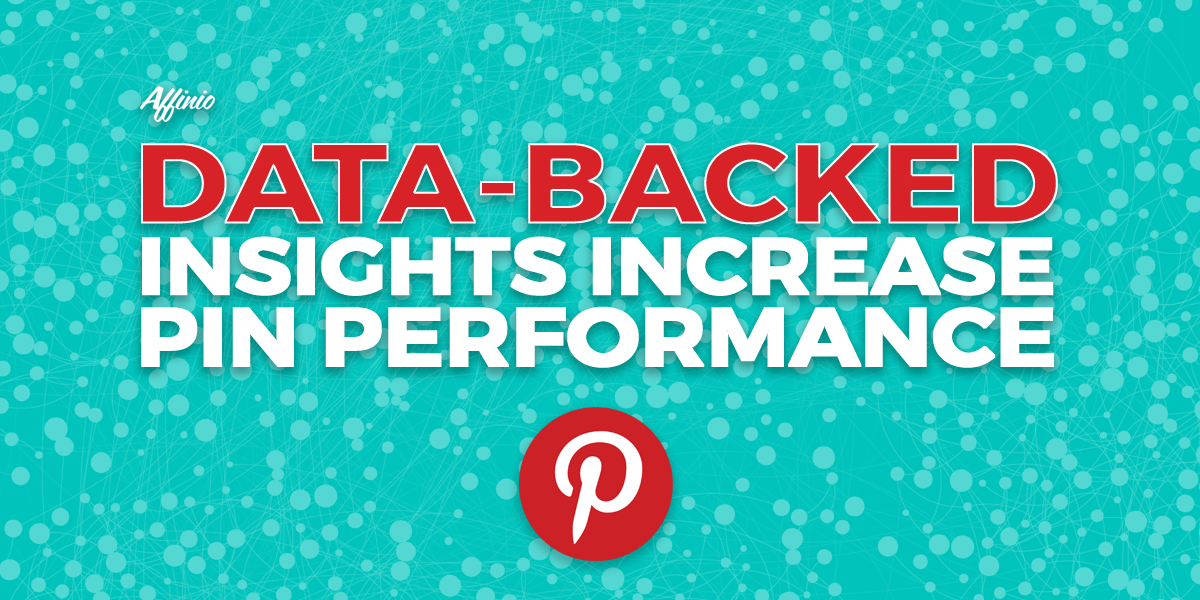
Retail Brands, Listen Up! Pinners are Ready to Buy.
From photos of home improvement hacks, design and DIY projects, delicious recipes, to the latest fashion trends, Pinterest is the ultimate shopping and search engine. In October 2016, the platform surpassed over 150 million monthly active usersand 2 billion monthly searches. And it’s not just Moms pinning their latest DIY project, 40 percent of global signups are men and the number of men actively searching on Pinterest is up 55 percent year-over-year! It’s safe to say Pinterest has established itself as a go-to visual search engine for both men and women.
A recent study released by Social Media Today shows that 89% of daily Pinterest users bought something they found on Pinterest and 64% of all users have looked at items they previously pinned to help them find products while shopping.
For retail brands, Pinterest offers a unique opportunity to connect with audiences who are actively searching for, and willing to buy, products that meet their needs and desires.
Pinners are ready to buy! So how can brands increase their odds of success and connect to audiences, thereby improving the chances of a consumer purchase?
Create a Data-Driven Pinterest Experience
“Pinterest is not a place for selfies”, says CEO, Ben Silbermann. Instead, it is a place “to find ideas to try, figure out which ones they love, and learn a little bit about themselves in the process.”
Brands who can connect to their audience and break through in culture are the ones that make a lasting impression. So like Silbermann said, the brands that can get to the heart of the consumer and understand what they love and what ideas inspire them, will succeed.
Brands can break through in culture by taking an audience-first approach.
Instead of building strategies and then finding the audience, an audience-first approach flips this process. Before brands can successfully strategize and implement a Pinterest content strategy, they must have an intimate understanding of their ideal audience.
By leveraging interest-based segmentation, brands can identify who or what is contextually relevant to their ideal audience. By analyzing the billions of network connections within a given audience, Affinio sheds light on who exists within an audience, what their interests are, as well as their inspirations.
By understanding the consumer and their motivations intimately, brands are poised to position and build better, relevant content.
Insights in Action: Building a Pinterest Experience for “Fit Moms.”
For example, let’s say I am an outdoor clothing brand and am interested in growing my Pinterest presence, and ultimately my sales. I know that 86% of all users use Pinterest while they are shopping, and I want to ensure my products are top-of-mind when consumers are shopping by betting positioning my Pinterest content.
Using Affinio, I analyzed and segmented my audience into six interest-based clusters based on their shared interests and affinities. The algorithm also takes into account how these clusters self-describe, so it is easy to identify communities with over-indexing keywords such as “Mom,” “Blogger,” “Travel,” etc.
By using interest-based segmentation, I now have immediate insight into how likely each audience is to follow a given account and how relevant these interests are to my audience. Not only can I see what’s of interest to them, but I also have the insight to create a deeper connection between them and my brand.
Let’s say the “Fit Moms” cluster is my target market. Based on their bio keywords such as “Mom,” “Fitness,” and “Health,” as well as their shared interests in fitness and healthy food + recipe accounts, one insight that we can infer is that this Mom community values living a healthy lifestyle.
Take a look at some of the top influential accounts – what are they pinning that is resonating with my ideal audience?
- PopSugar Fitness
- Women’s Health Magazine
- Real Simple
- SHAPE
- Skinny Mom
- Whole Foods
- Skinny Taste
- REI
- Target
- Under Armour
Insights Feed Pinterest Content Creation.
By looking at the high relevance accounts within this segment, as well as what Pinner’s value most about themselves in their keywords, I now have insight into the type of content that is most relevant to this audience. In this case, creating content to Pin or place on a new Pinterest Board that speaks to living a healthy lifestyle is essential.
By creating content that relates to the consumer’s interest, brands will create a meaningful data-driven Pinterest experience that establishes them as a top-of-mind choice for purchase decisions.
Originally posted on the Affinio blog.

